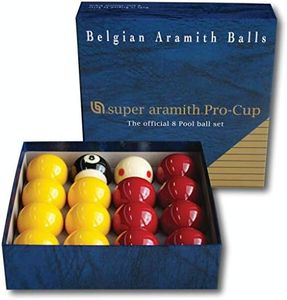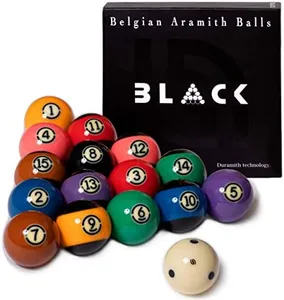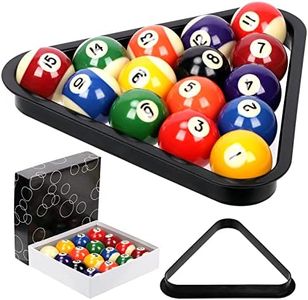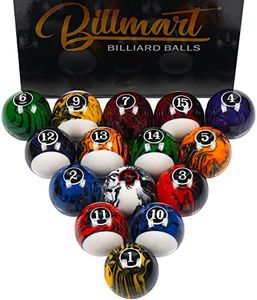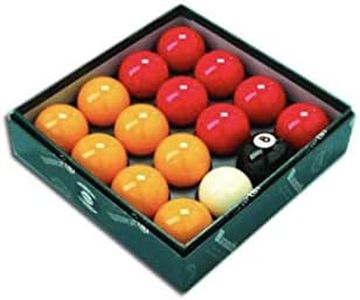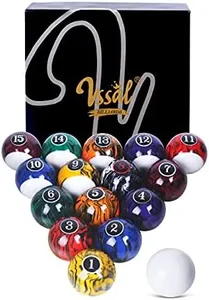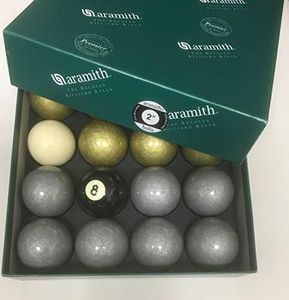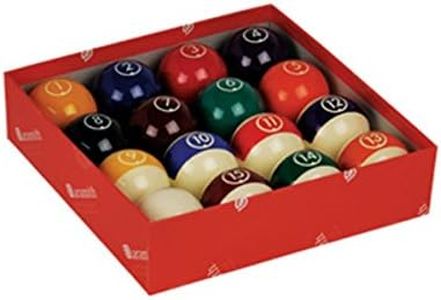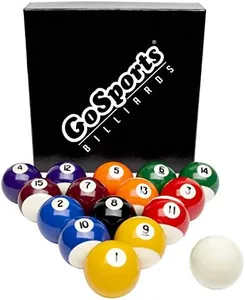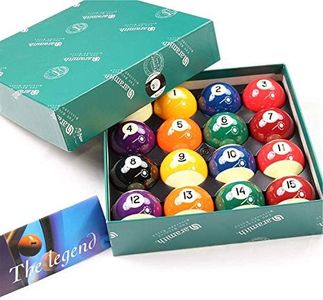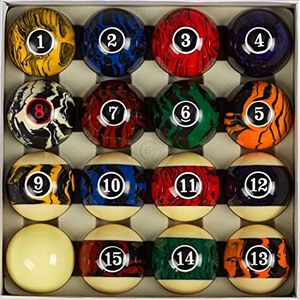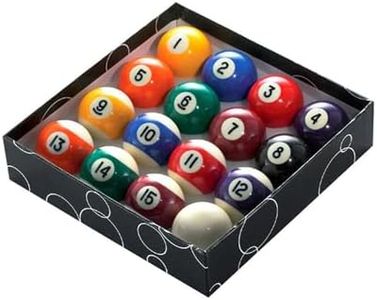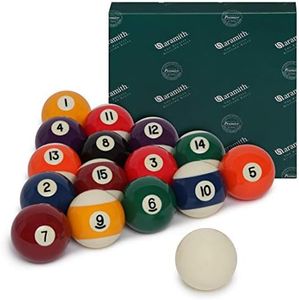We Use CookiesWe use cookies to enhance the security, performance,
functionality and for analytical and promotional activities. By continuing to browse this site you
are agreeing to our privacy policy
10 Best Pool Balls
From leading brands and best sellers available on the web.By clicking on a link to a third party's website, log data is shared with that third party.
Buying Guide for the Best Pool Balls
Choosing the right set of pool balls can make a big difference in how enjoyable and fair your games are. The quality, size, material, and finish of the balls all impact gameplay, durability, and even the look of your table. It's important to understand what makes one set of pool balls different from another so you can pick a set that matches your needs, whether you're playing casually at home or more seriously for practice or competition. Here are the key specifications to consider when selecting pool balls, along with tips on how to find the best fit for you.MaterialPool balls are typically made from phenolic resin, polyester, or acrylic. This refers to the substance that the balls are formed from, and it matters because it affects durability, color retention, and how the balls roll across the table. Phenolic resin is known for being the most durable with a consistent roll, making it the top choice for serious play or frequent use. Polyester and acrylic are more affordable and can be fine for casual play, but they may chip or discolor more easily. If you play often, look for phenolic resin; if you play just once in a while, polyester or acrylic might suit your needs well.
Size and WeightStandard pool balls for most games are 2 1/4 inches in diameter and weigh around 5.5 to 6 ounces each. Size and weight affect how the balls bounce, roll, and interact, so it's important for competitive play that all balls adhere to this standard. Some sets for children or smaller tables might be smaller, and lightweight balls may feel different when struck. If you're practicing for regulation games or tournaments, always choose the standard size and weight; for kids or mini tables, the smaller versions might be easier to use.
Finish and PolishThe finish of a pool ball is the outer surface, which is polished to a shine. A smooth, high-gloss finish means the ball will move smoothly on the felt and resist dirt and chalk stains. Over time, a poor finish will wear down, affecting gameplay and making the balls look old. For best results, look for balls described as having a high-quality, durable gloss finish, especially if you want them to last or if you like your table to look sharp.
Color and NumberingPool balls come in standard sets with specific colors and numbers for each ball. This standardization is important for most classic games like 8-ball or 9-ball. Some sets use different color schemes or have fancy designs, but these can be confusing if you plan to play traditional rules or practice seriously. If you're learning the game or play by the book, get a set with the standard U.S. or World Pool-Billiard Association colors and clear numbers; for novelty or fun, creative designs might appeal more.
Tolerance and BalanceTolerance refers to how precisely each ball meets the official specifications for size, weight, and roundness. Balance means how evenly weight is spread within each ball. Poor tolerance or balance will make balls roll unpredictably, which can ruin games. High-quality sets state their precision, so if accuracy matters to you (like for regular or competitive practice), choose a set with stricter tolerances and meant for professional or tournament use. For casual play, this may not be as crucial.
